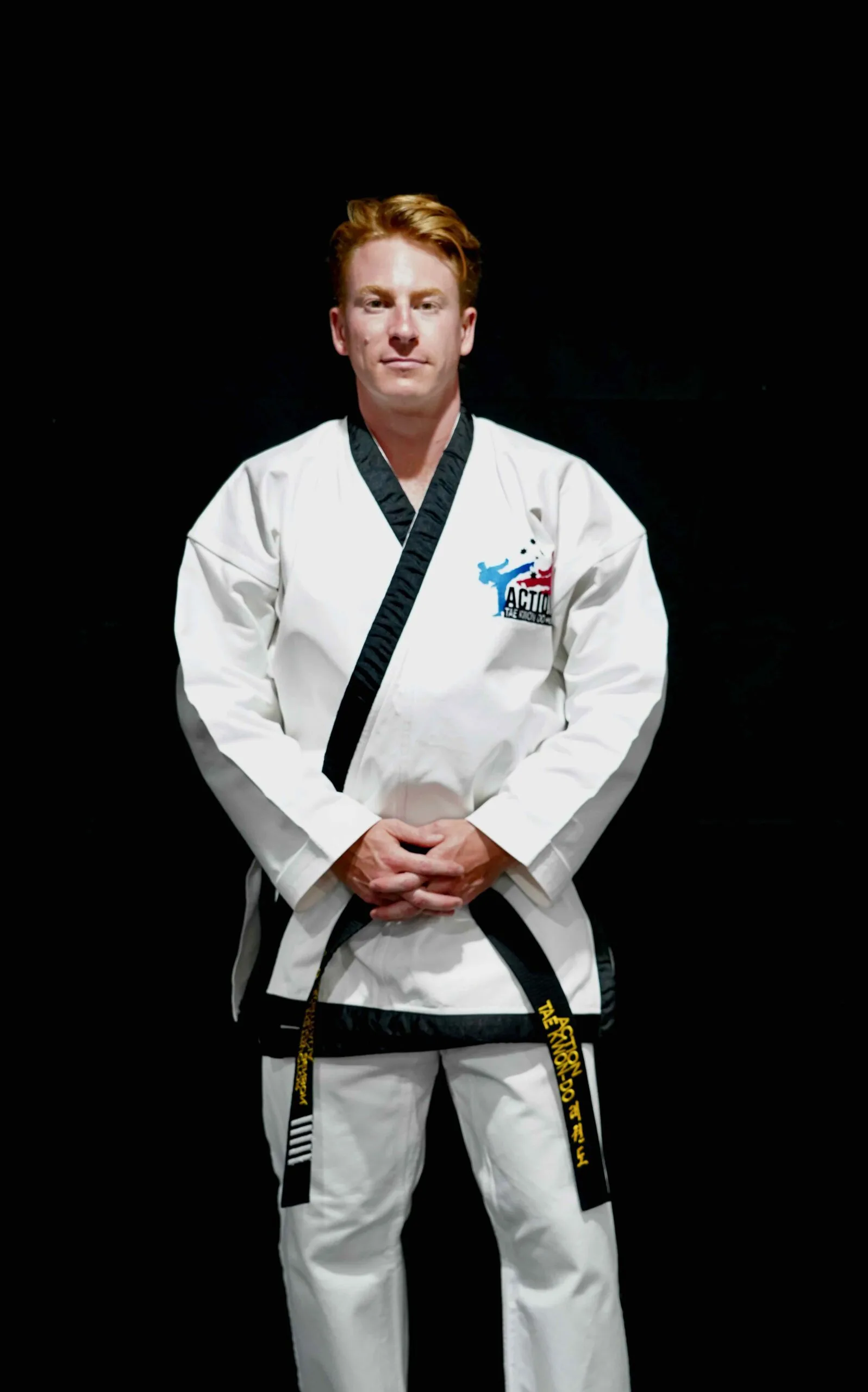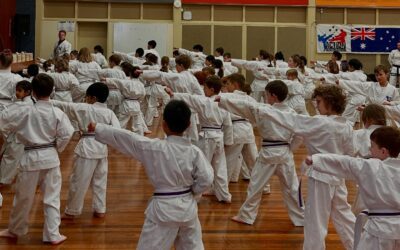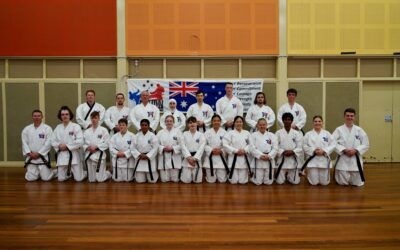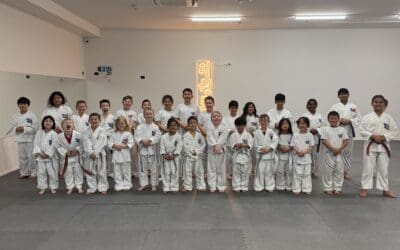A Time Tested Art
Exploring the Art of Self Defence
Heard of Taekwondo? No? Here at Action Tae Kwon-Do we teach this time tested art and have done so for over 35 years. In light of this I thought I’d put together this article for some background for those out there doing some research into different martial arts or for those in particular looking at the different Canberra martial arts on offer. Read on for some info on our favourite art, Taekwondo.
Taekwondo also known as “Tae Kwon-Do” is a traditional Korean martial art that has gained worldwide recognition and popularity for its unique and dynamic techniques.
There is significance in the three words “Tae” “Kwon” “Do”. “Tae” means “foot,” “leg,” or “to step on”; “Kwon” means “fist,” or “fight”; and “Do” means the “way” or “discipline.” Combining these three words can translate to “The way of the foot and fist or “foot and fist discipline”. Other interpretations include “The Art of Self Defence”.
Taekwondo is characterised by its powerful kicks and hand techniques. But Taekwondo is more than just a physical practice, it is also encompasses a philosophy and way of life that emphasises discipline, respect, and self-control. In this article, we will explore What is Taekwondo?, its’ history, philosophy, techniques, and benefits.
Table of Contents
History of Taekwondo
Taekwondo has a long and rich history that dates back to ancient Korea. It is said that the earliest form of Taekwondo can be traced back to the Three Kingdoms period (57 BC – 668 AD) when the kingdoms of Goguryeo, Baekje, and Silla were fighting for supremacy. During this time, soldiers developed various combat techniques, including hand-to-hand combat and archery. These techniques were later refined and integrated into the practice of Taekwondo.
For more info on the history of Taekwondo click here.

General Choi Hong Hi
In the 20th century, a Korean General by the name of Choi Hong Hi developed Taekwondo and helped it to became an official sport in Korea and gain international recognition. The World Taekwondo Federation (WTF) was established in 1973, and Taekwondo became a demonstration sport at the 1988 Olympic Games in Seoul, Korea. It was eventually added into the 2000 Olympics in Sydney, Australia.
Philosophy of Taekwondo
The philosophy of Taekwondo is rooted in the values of discipline, respect, and self-control. Students of Taekwondo are encouraged to develop a strong mind and body connection and to cultivate inner strength, courage and peace. The historical five tenets of Taekwondo are:
- Courtesy: to be polite and respectful to others.
- Integrity: to be honest and true to oneself and others.
- Perseverance: to keep working hard and never give up despite hardships.
- Self-control: to have control over one’s thoughts and actions.
- Indomitable spirit: to never, ever give up in the face of adversity.
These tenets are not only applicable to Taekwondo practice but also to everyday life. Practitioners of Taekwondo are expected to live by these principles and apply them in their interactions with others.
Action Tae Kwon-Do’s tenets draw from this and are as follows:
- Perseverance
- Commitment
- Courage
- Strength
- Honesty
- Respect
Techniques of Taekwondo
Taekwondo is known for its dynamic and powerful techniques that utilises both the hands and feet. Some of the many techniques of Taekwondo are:
- Punches – jabs, reverse punches, combinations and variations on all of these.
- Kicks – front kick, crescent kick, vertical kick, side kick, turning kick, back kick.
- Blocks – side block, front block, low block, reverse low block rising block and variations on all of these.
- Throws – hip throw, shoulder throw, leg sweep and many many more.
- Joint locks and releases – wrist locks, arm locks, head locks and variations on all of these as well as releases from these positions too.
Sparring in Taekwondo plays a major role in learning the martial art. Sparring is a form of free-style fighting where students use controlled techniques to practice both attacking and defending in a self defence situation. Sparring helps students develop their reflexes, timing, and control, and is a very important aspect of Taekwondo training.
Benefits of Taekwondo
Taekwondo has numerous benefits for both the body and mind. Here are some of the top benefits of Taekwondo:
- Physical fitness: Taekwondo is a great way to improve overall fitness and health. As part of learning Taekwondo students will improve their strength, endurance, flexibility, and cardiovascular health. Students also burn calories and lose weight, which can lead to happier, healthier bodies.
- Self-defence: Taekwondo teaches practical self-defence techniques that can be used in real-life situations. Students learn how to defend themselves using their fists and feet, as well as how to deal with an attacker using joint locks and throws. Outside of the physical aspect of self defence, students will gain confidence in situational awareness and body language which is invaluable in understanding these unfortunate situations.
- Confidence: One of the underrated aspects of learning Taekwondo is the development of self-confidence and self-esteem. Through continuous training where failure occurs or undertaking gradings in front of spectators and peers students will start to believe in themselves and their abilities, which can translate to other areas of their lives, such as school or work.
- Discipline – Taekwondo has a strong emphasises on discipline and self-control. Students learn to set goals, work hard, and persevere through challenges. This discipline can lead to improved focus, concentration, and time management all great skills to carry through life.
- Stress relief – Taekwondo is a great way to relieve stress and tension. Students can leave the day of work outside the gym, focus on a complex skills, participate in physical fitness and channel their emotions and frustrations into their training, which can help them feel calmer and more centered.
Summary
Taekwondo is a fascinating, layered martial art that combines physical training with mental discipline. It is a great activity for people of all ages and skill levels, as it offers numerous benefits for the body and mind regardless of age. Whether you are interested in self-defence, physical fitness, or personal development, Taekwondo has something to offer.
So, why not try it out for yourself and discover the world of Taekwondo? What have you got to lose? Remember, “the journey of a thousand miles begins with a single step” – so take that first step and see where it takes you!
If you’re interested you can read more in our blog, contact us today, check out our various programs or many locations, give me (Alex) a call or even just book now and I’ll be in contact.
